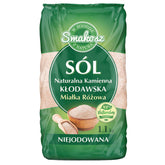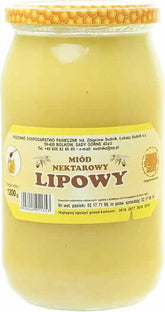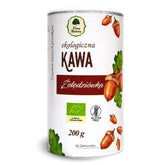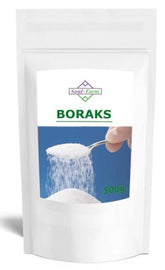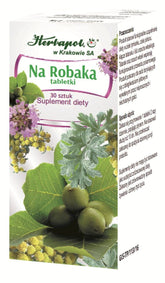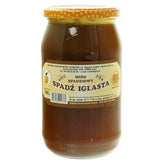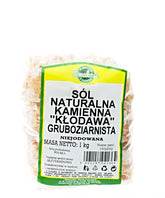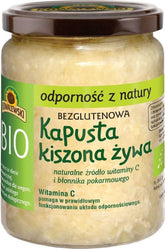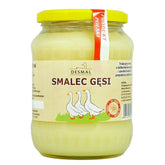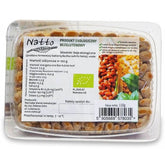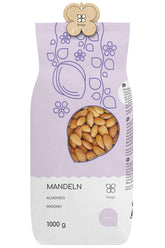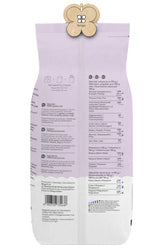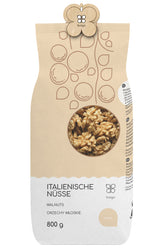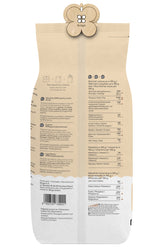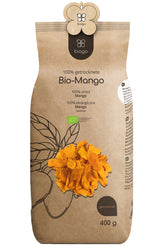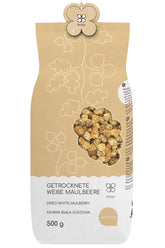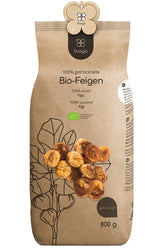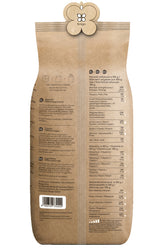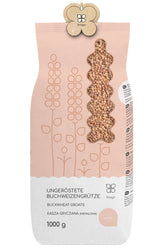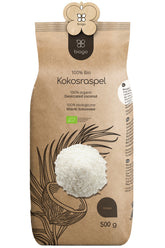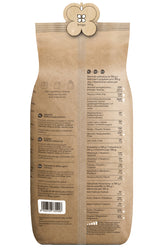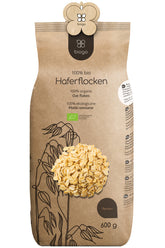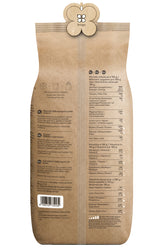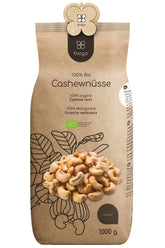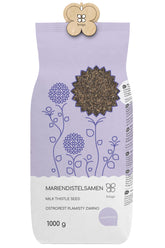Muscle soreness, or how can you prevent it from occurring and how can you combat it effectively?
- What are popular sourdoughs and how are they made?
- How can you prevent the formation of sourdough in advance?
- First, proper hydration of the body
- Secondly, a high supply of anti-inflammatory ingredients
- Thirdly, a high protein intake in the daily diet
- BCAA and leucine – why are they so important in the process of muscle regeneration?
- Other ways to prevent pain
- What if pain already occurs?
- Summary
Who among us has never encountered soreness and experienced this affliction on their own skin? Although this phenomenon is completely normal, it is not very pleasant. Therefore, we decided to delve a little deeper into the topic and see if there is an effective defense against muscle soreness. Due to the fact that this condition is very complex and many factors influence it, we will only discuss the most important ones. Furthermore, it is worth noting that pain is not only the domain of people who regularly go to the gym or run marathons. It can affect any of us, and it is worth knowing its causes and methods to counteract it.
What are popular sourdoughs and how are they made?
Muscle soreness, or more accurately, delayed-onset muscle soreness, is also known as DOMS (Delayed Onset Muscle Soreness During Exercise). It is nothing more than muscle pain of varying intensity that occurs after intense physical exertion. This phenomenon usually becomes noticeable 24 to 48 hours after training or exercise and usually lasts up to 5-7 days. Interestingly, until recently, the common belief was that muscle soreness was caused by an excessive accumulation of lactic acid in the muscles. However, we now know that this is not true, as delayed-onset muscle soreness is nothing more than mechanical muscle damage. More specifically, it involves micro-damage to the muscles and surrounding connective tissue. It most often occurs after intense strength training, especially without proper warm-up, or after a long break from training, as well as after normal daily physical activity. With such micro-damage, inflammation can also develop, which is also responsible for increased pain in the muscle tissue. However, as for the lactic acid produced in the muscles, it is practically eliminated within an hour after exercise, so it has nothing to do with muscle soreness. However, it's worth noting that the accumulation of large amounts in the muscles during exercise can cause discomfort during exercise itself. After all, it's one of the products produced by the combustion of glucose, which is so essential for the proper functioning of all muscles. The basic symptoms of muscle soreness include pain, stiffness, and weakness, as well as swelling, tenderness, or a reduction in the range of motion of a particular muscle.
How can you prevent the formation of sourdough in advance?
As with almost all diseases, it's better to prevent acidosis than to treat it later. Interestingly, this phenomenon is strongly correlated with our body's nutritional status. Therefore, one of the fundamental methods to counteract it is simply a healthy diet. However, it's important to understand which food components reduce the risk of delayed onset muscle soreness and which can actually increase it.
First, proper hydration of the body
Proper hydration is extremely important not only for physically active people, but for all of us. A high water intake in the diet is an indicator of the body's proper electrolyte balance and influences proper muscle function and recovery. In cases of overtraining and the resulting delayed onset of muscle soreness, adequate hydration can significantly reduce its symptoms. Furthermore, in the case of dehydration, muscle micro-tears can cover much larger areas of muscle tissue, making the pain much more painful. Remember that simply consuming large amounts of fluid before training is not enough. After all, hydration of the system takes time, and we should maintain it at a high level regardless of the planned training sessions.
Secondly, a high supply of anti-inflammatory ingredients
Since muscle soreness is naturally correlated with inflammatory reactions in muscle tissue, it's worth incorporating anti-inflammatory substances into your diet. Omega-3 fatty acids, caffeine, taurine, and some polyphenolic compounds are among the most well-researched substances of this type, which also have strong anti-inflammatory effects. It has been shown that taking these substances both before and after exercise can significantly reduce the intensity of muscle soreness. Furthermore, these compounds also have antioxidant properties and thus impact our health by combating free oxygen radicals. To supply our bodies with taurine and omega-3 acids, we should reach for meat products, especially fatty sea fish such as salmon, tuna, or mackerel. Large amounts of polyphenols, on the other hand, are found in cherry, blueberry, and pomegranate juice. Caffeine occurs naturally in coffee, tea, and cocoa beans.
Thirdly, a high protein intake in the daily diet
Since proteins, or amino acids, are the basic building blocks of our body, we should ensure they are adequately supplied in our diet. Proteins also play an important role in the regeneration of damaged tissue, including muscle tissue. This not only enables exercise-induced muscle growth but also ensures proper recovery. Ultimately, the resulting micro-damage must be repaired quickly, which manifests as pain, muscle weakness, or inflammation. A high protein intake in the diet minimizes the risk of muscle soreness, and if it occurs, this condition lasts much shorter – due to the efficient processes for rebuilding damaged muscle fibers. Interestingly, milk-derived proteins perform best in this role. They exhibit the greatest ability to regenerate muscle tissue, and due to their high bioavailability, their effect begins relatively quickly. It's also worth noting that drinking 500 milliliters of milk immediately after exercise can have a significant impact on reducing muscle soreness, which manifests itself in the form of pain symptoms.
BCAA and leucine – why are they so important in the process of muscle regeneration?
BCAAs are branched-chain amino acids, and we can distinguish leucine, isoleucine, and valine. They are responsible, for example, for the rapid regeneration of muscle tissue, as well as its proper functioning and growth. It's worth noting that milk proteins are a good source of them, but they are also found in animal products (beef, poultry, eggs, fish) and plant-based products (soybeans, beans, peas, lentils, nuts, and seeds). These amino acids can also be obtained in the form of all kinds of dietary supplements and protein supplements. However, it's worth noting that leucine has the greatest impact on muscle recovery and, therefore, on the possible occurrence of muscle soreness. It's estimated that it's not so much the amount consumed throughout the day that matters, but rather the amount of this amino acid in individual meals. For this, it's worth consuming 1.5 to 2.7 grams of leucine per meal. This amount has been shown to be most effective for building and regenerating our muscle tissue. Most of this amino acid is found in dairy products (cheese, yogurt, cottage cheese), chicken eggs, chicken, fish, pork and some products of plant origin (millet, bread, white beans, peas, beetroot).
Other ways to prevent pain
The most common cause of muscle soreness is still some kind of overtraining. To avoid it, we should pay close attention to warming up before training. Preparing the muscles for the upcoming physical exertion, as well as warming up, has a significant impact on subsequent recovery. We should also remember not to end training too quickly or abruptly. The faster our body relaxes, the slower the lactic acid produced in the muscles is broken down, and the repair processes also slow down. Therefore, after completing a proper workout, we should perform gentle aerobic exercises aimed at gradually relaxing the muscles. The same applies to the intensity of the workout itself. Begin the adventure with almost any physical activity; it's worth slowly acclimating the body to the exertion and gradually increasing the intensity of the workout. Otherwise, we almost always struggle with muscle soreness.
What if pain already occurs?
One of the worst things we can do to combat delayed-onset muscle soreness is to not stop strenuous physical activity. Yes, recovery training is a good idea, but we must remember that it shouldn't be too intense. Otherwise, not only will the muscles not recover, but we'll also deepen the micro-damage occurring in them and increase the intensity of inflammation. A good way to relieve pain is a sauna or a warm bath, but this should be done several hours after training, otherwise the effect will be the opposite. We can also undergo all kinds of massages and massage sore areas ourselves. Using a swimming pool is also recommended, as gentle exercise combined with cold water can significantly minimize the symptoms of overtraining and accelerate muscle recovery. Don't forget to get enough sleep, as this is when the recovery process is most effective.
Summary
Muscle soreness is certainly unpleasant, but it is nevertheless an intrinsic part of intense physical activity. Fortunately, there are many ways to protect yourself from it. One of them is a proper diet and ensuring good hydration. We can also structure our training to reduce the risk of its occurrence to an absolute minimum. However, sometimes this is not enough, and sooner or later we become victims of delayed-onset muscle soreness. In this case, we can also implement a series of activities that will certainly significantly reduce pain and shorten the duration of muscle soreness, allowing us to resume our daily physical activity much sooner.
THE PUBLISHER'S CHOICE
Almonds 1 kg BIOGO
- €11,69
€13,75- €11,69
- Unit price
- / per
Walnuts 800 g BIOGO
- €8,65
€10,18- €8,65
- Unit price
- / per
Dried organic mango 400 g BIOGO
- €10,99
- €10,99
- Unit price
- / per
Dried White Mulberries 500 g ORGANIC
- €5,84
€6,87- €5,84
- Unit price
- / per
Dried organic figs 800 g BIOGO
- €30,12
- €30,12
- Unit price
- / per
Unpeeled buckwheat groats 1 kg BIOGO
- €2,81
€3,31- €2,81
- Unit price
- / per
Organic coconut flakes 500 g BIOGO
- €10,07
- €10,07
- Unit price
- / per
Organic oat flakes 600 g BIOGO
- €3,77
- €3,77
- Unit price
- / per
Organic cashew nuts 1 kg BIOGO
- €19,99
- €19,99
- Unit price
- / per
Milk thistle seeds 1 kg BIOGO
- €3,99
- €3,99
- Unit price
- / per

